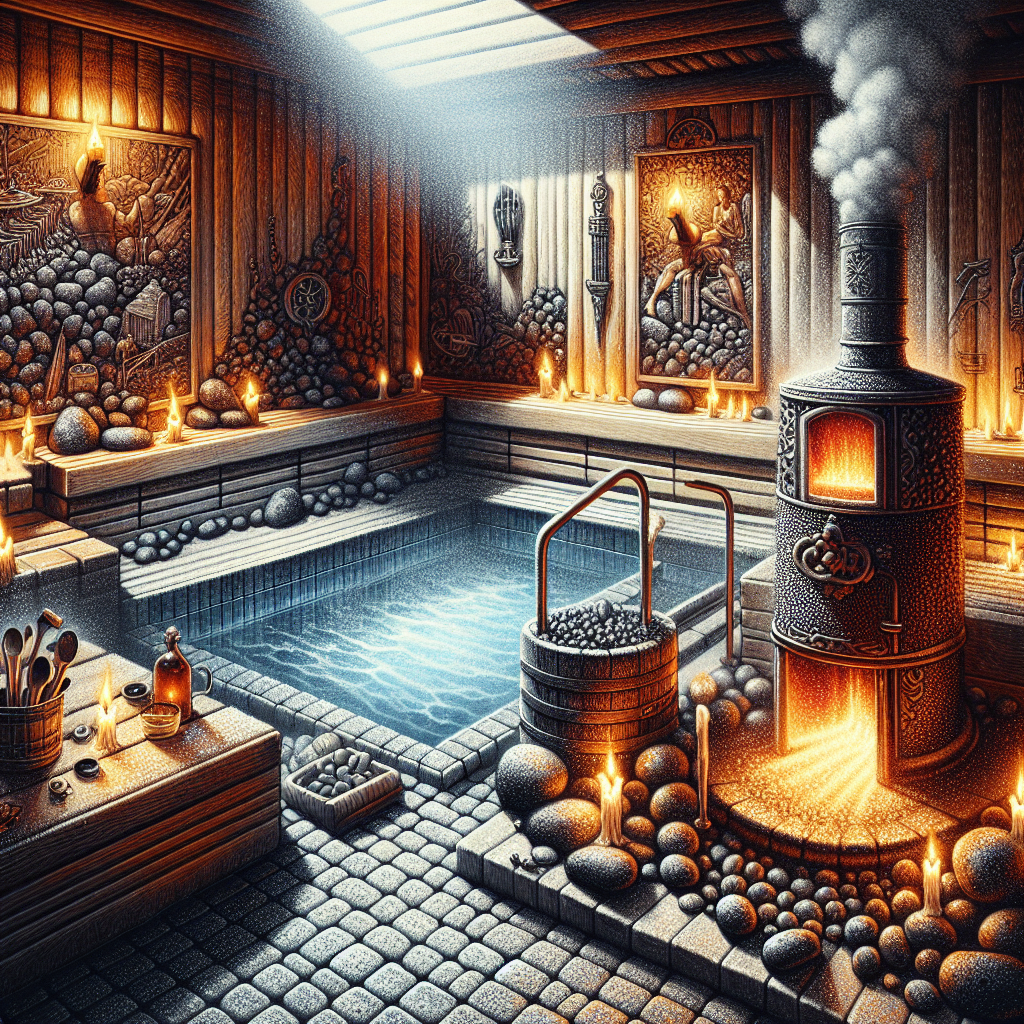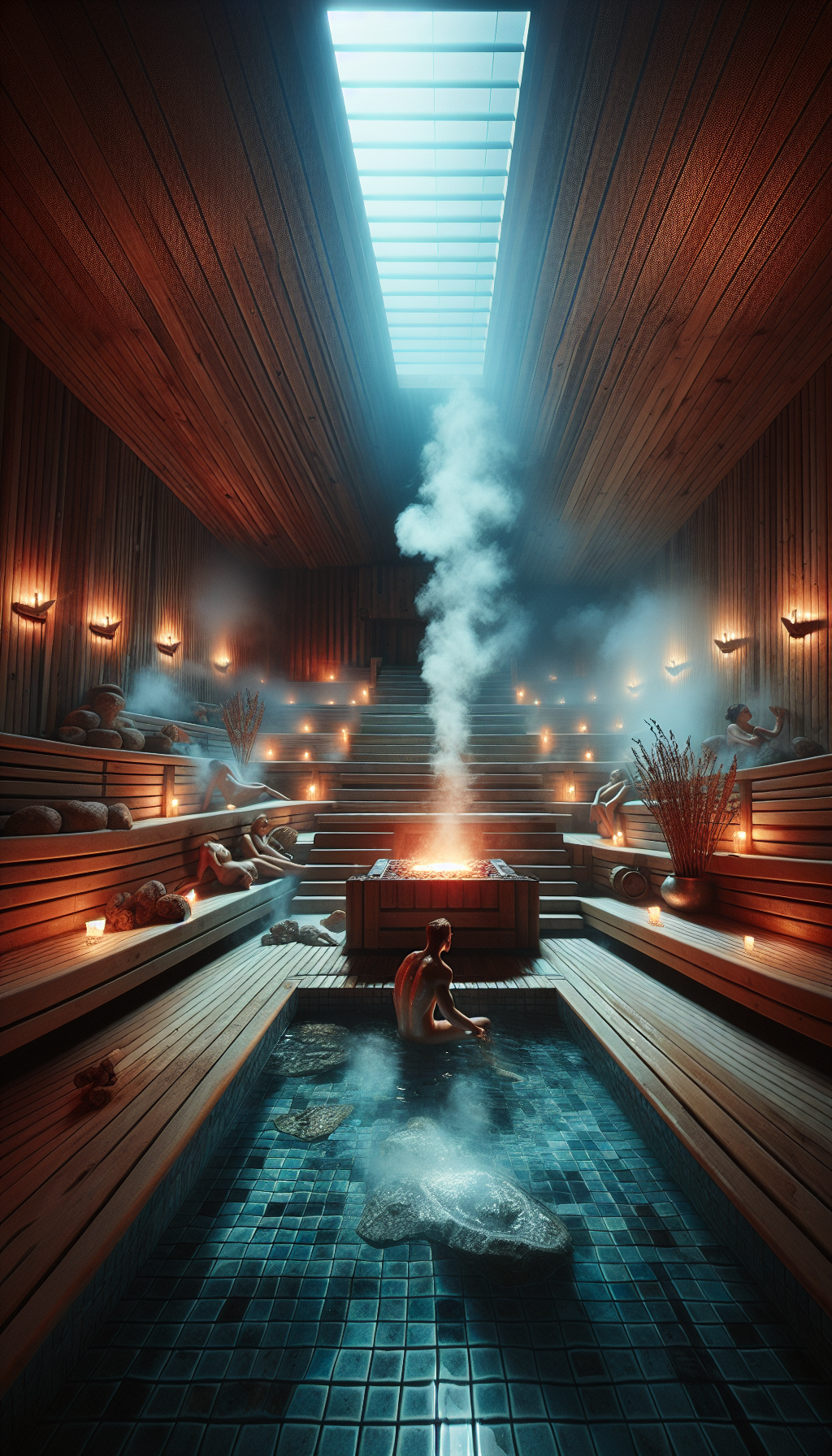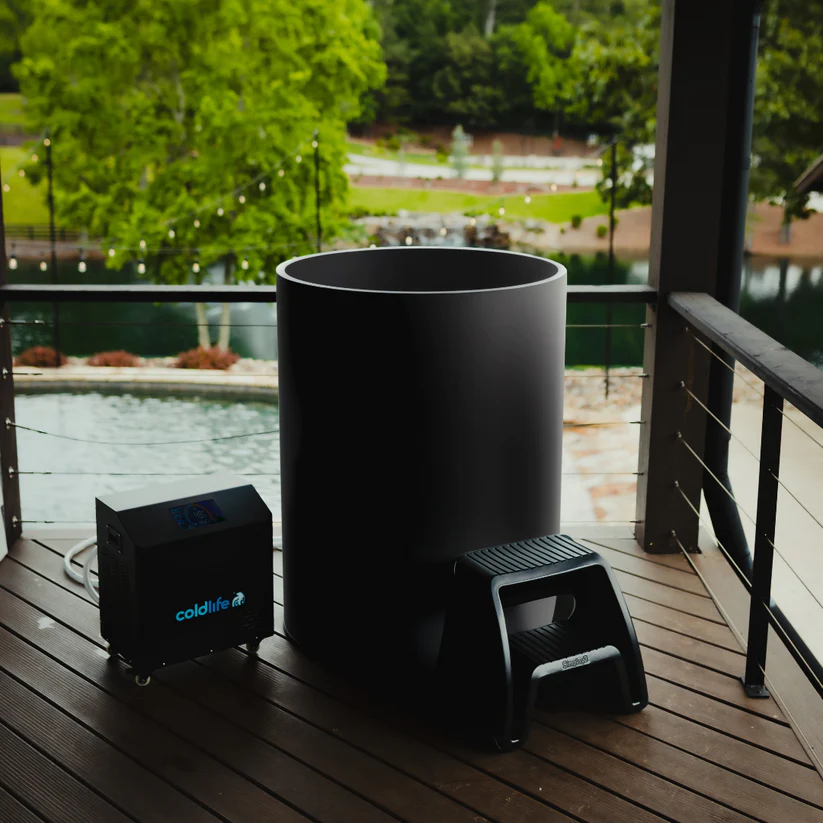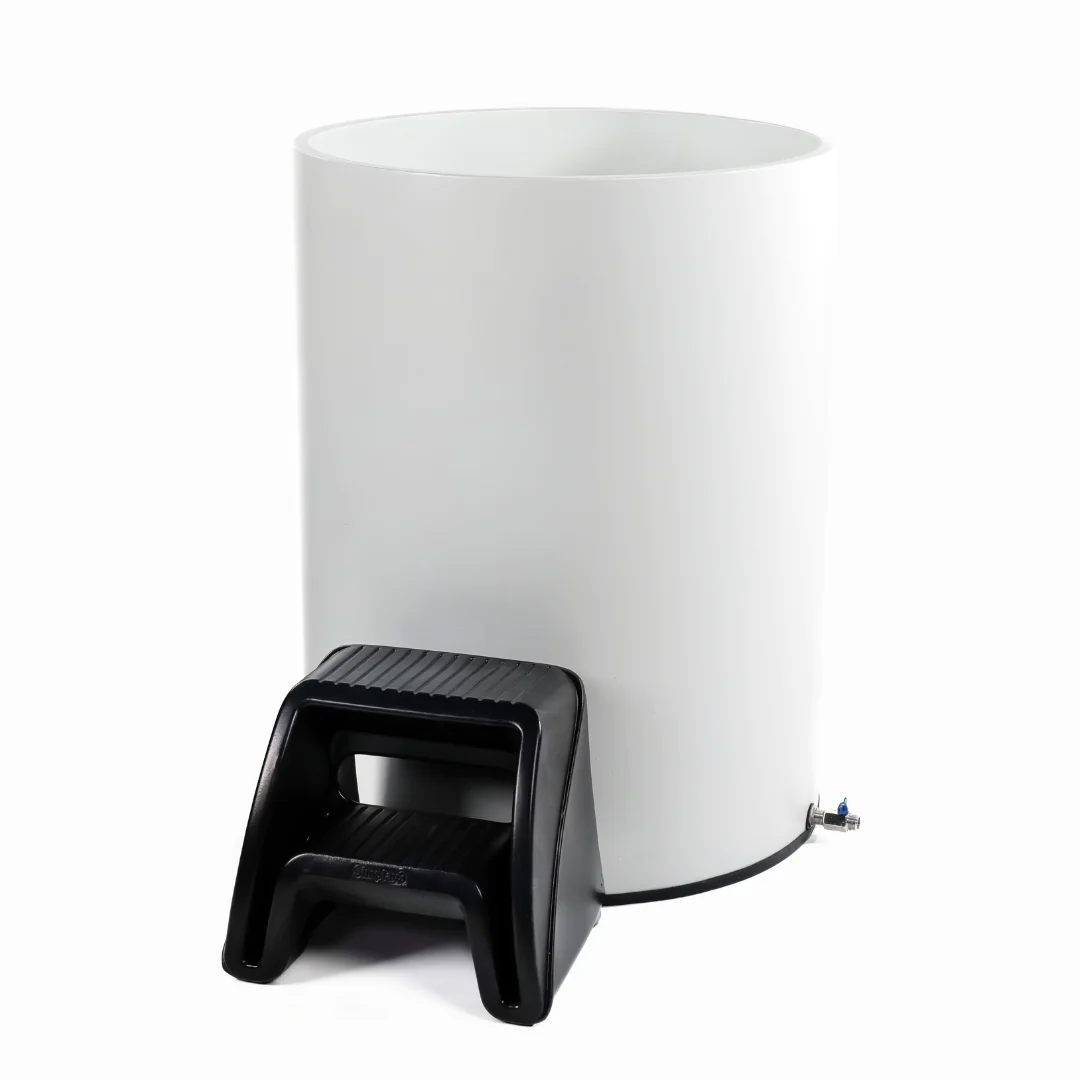Key Takeaways – Cold plunge or sauna
Takeaways:
1. Both cold plunges and saunas have their own unique benefits and can be used individually or in conjunction for maximum health benefits. Saunas are great for increasing blood flow, promoting relaxation, improving cardiovascular health, and aiding in muscle recovery. On the other hand, cold plunge therapy is fantastic for reducing inflammation, flushing out toxins, relieving joint pain, and enhancing lymphatic circulation. 2. Contrast therapy, which involves alternating between sauna sessions and cold plunge sessions, combines the advantages of both treatments. It improves blood flow while reducing inflammation, providing a comprehensive recovery experience. 3. It’s important to listen to your body and consult a doctor if you have any heart conditions before trying these therapies, as they involve drastic changes in temperature that may impact heart rate or blood pressure levels. When incorporating these practices into your routine, aim for around 20 minutes for a sauna session followed by two to ten-minute-long cold plunge sessions. However, individual tolerance levels may vary. By incorporating saunas and cold plunges into your recovery routine correctly and with caution, you can significantly enhance your overall well-being and athletic performance.Our #1 Best Recommended Cold Plunge
1. The best way to lead The Cold Life is by focusing on fitness and maintaining a healthy lifestyle. 2. Click here to explore more about healthy tips and tricks for leading an active, cold life. 3. Find out how you can embrace the chilly weather, by visiting our page on Living the Cold Life.Are you ready to redefine your limits with cold immersion?
Explore the compelling truth behind cold plunging and its remarkable benefits for mind and body.
Dive into the Cold Life Plunge Bundle now to embark on your journey to revitalization and strength. Transform your life today!
Here’s a Youtube Video about Cold plunge or sauna
If you’re searching for ways to improve your overall health and wellness, consider incorporating a routine of cold plunge or sauna sessions into your life.
Both therapies have been found to bring about remarkable health benefits – A sauna can aid in detoxification, stress relief and chronic pain reduction, whereas a cold plunge is renowned for activating the body’s natural healing powers, improving circulation and boosting immune response.
Combining both in what is known as contrast therapy can be even more potent – leveraging the power of heat and cold to optimize physical rejuvenation.
However, it’s crucial to note that individuals with heart conditions should approach these therapies with caution.
Likewise, finding an optimal duration for each session is vital in avoiding overexposure risks while reaping maximum benefit.
Ultimately, appropriate utilization of both a sauna and cold plunges can significantly enhance your recovery routine.

Understanding the Benefits of a Sauna
Did you know that a session in a Finnish sauna or an infrared sauna can do wonders for your health? By the way, I’m not just talking about any type of sauna, but specifically those that are recommended for use in the evening or directly after physical exercise. The key benefit lies in their ability to increase blood flow. As I like to say, these steamy sessions also encourage relaxation and trigger the release of endorphins – those feel-good hormones that promote a sense of well-being. Or, as we’d call it in wellness circles, they provide an all-natural heat therapy. But there’s more – saunas are also fantastic at assisting with healing muscle tears from workouts which is especially beneficial after a serious sweat session at the gym. [h2]Exploring the Health Advantages of a Cold Plunge Now picture this: plunging into icy water might sound daunting but once you get past your initial fear and dive into a cold plunge pool or embark on some cold showers, be prepared to experience superior anti-inflammatory properties. Meanwhile, fans of ice bath hydrotherapy attest to its benefits for recovery from endurance-based exercises. Here’s where it gets interesting. The benefits extend beyond just reducing inflammation – they flush out toxins through your skin and enhance joint relief especially for people with inflammation-related ailments. Imagine this as being akin to taking your body through its own special detox process – all within the confines of your favourite wellness therapy centre or even your home sauna setup.
Download this courtesy guide to optimize your sauna and cold plunge experience and health optimization.
Download the Free Guide TodayContrast Therapy: Combining the Power of Sauna and Cold Plunge Sessions
“You see,” you might think to yourself one day while enjoying some time in your hot tub, “maybe I could combine sauna and cold plunge sessions”. And you’d be right – contrast therapy is a popular method where sauna sessions are followed by cold plunge sessions. This theory combines the advantages of both treatments, offering improved blood flow from sauna sessions with reduced inflammation from cold plunges.Cautionary Advice for Individuals with Heart Conditions
In any case, caution must be applied. Those with heart conditions should consult a doctor before trying these therapies as they involve drastic changes in temperature which could impact heart rate or blood pressure levels.Determining Optimal Duration for Sauna and Cold Plunge Sessions
Now that I think about it, knowing how long each session should last can be tricky. But don’t worry, Drs Susanna Søberg and Andrew Huberman recommend around 20 minutes for a sauna session followed by two to ten-minute-long cold plunge sessions. However this may vary based on individual tolerance levels.Appropriate Utilization of Sauna and Cold Plunges for Enhanced Recovery Routine
All things considered, both practices can significantly enhance your recovery routine if used correctly. Whether you choose to conduct these therapies in a professional spa setting or through home hydrotherapy using your own jacuzzi or thermal spa setup – remember that when it comes to this aspect of wellness therapy, it’s all about balance.
Whether you’re a seasoned expert or a brave newbie ready to take the plunge, understanding and determining the optimal temperature for a cold plunge is essential. When exploring what temperature is too cold for a cold plunge, you will find that it’s not necessarily about braving the harshest conditions – finding your personal pace can often be much more beneficial. Using the Sauna or Cold Plunge first often leads to questions, especially for those who are beginners on this wellness journey. It is important to understand their individual benefits before deciding which one to start with. But what truly matters, is knowing how these treatments affect your body and how they can enhance your health. If you’re wondering are cold plunges good, there are plenty of resources highlighting its numerous health benefits! From improving circulation to boosting your mood – it’s surely an experience worth considering. A common concern that gets raised when talking about this topic is: Is a cold plunge bad for your heart?. While it’s true that this treatment causes an initial shock to the system, when done correctly and within limits, it can actually boost cardiovascular health. And if you’re pregnant or breastfeeding and are considering incorporating these wellness practices into your routine, our articles on whether cold plunges are safe during pregnancy, and can you do cold plunge while breastfeeding will be a helpful read for you. Always remember to consult with your healthcare provider before starting any new health practices. In conclusion, Cold plunges and saunas have their individual strengths, and knowing when to engage in one or the other can optimise the health benefits they offer. Your health and safety should always come first, hence understanding the mechanics behind these treatments can help you make informed decisions.
My Personal Take about Cold plunge or sauna
Hey pal, it’s me, George, your trusted authority when it comes to cold plunge or sauna.
Now that I think about it, I’ve spent countless hours deciphering the mysteries of these two hot and cold worlds for one simple reason; to help people like you uncover the best way to revitalize their body and mind.
Words of advice from an old pro – whether you choose the enveloping warmth of a sauna or the invigorating chill of a cold plunge, what really matters is that both can offer substantial benefits for your health. You see, they’re more than just luxurious experiences – they’re small investments in your wellness journey. So why not dive into a cold plunge or relax in a sauna? In any case, I promise you won’t regret it!
Our #1 Best Recommended Cold Plunge for most People
In many cultures, taking a cold plunge is considered beneficial for health. On the other hand, regular sweating in a sauna can also provide multiple health benefits. In this article, we will explore the benefits of both and determine whether a cold plunge or sauna is better for your health.Discover the unparalleled benefits of cold immersion with ColdLife Plunge 1. Unleash your full potential with our innovative cold plunging solution. Explore the transformative effects on your body and mind. Elevate your lifestyle with ColdLife Plunge 1 today!
Frequently Asked Questions about Cold plunge or sauna
1. Can I use a sauna and cold plunge together?
Yes, using a sauna and cold plunge together can provide maximum health benefits. This combination, known as contrast therapy, combines improved blood flow from the sauna with reduced inflammation from the cold plunge.
2. When should I use a sauna?
Saunas are typically recommended for use in the evening or after physical exercise. They help increase blood flow, promote relaxation, release endorphins for a sense of well-being, improve cardiovascular health, and aid in muscle recovery.
3. What are the benefits of cold plunges?
Cold plunges have superior anti-inflammatory properties that aid in recovery from endurance-based exercises. They reduce inflammation, flush out toxins through the skin, enhance joint relief (especially for inflammation-related ailments), and trigger lymphatic circulation to remove bacteria and toxins.
4. Is contrast therapy suitable for everyone?
While contrast therapy can be beneficial for many people, individuals with heart conditions should consult a doctor before trying these therapies due to the drastic changes in temperature that could impact heart rate or blood pressure levels.
5. How long should each session last?
According to Drs Susanna Søberg and Andrew Huberman, a sauna session should last around 20 minutes followed by two to ten-minute-long cold plunge sessions. However, individual tolerance levels may vary.
6. Can these practices enhance my recovery routine?
When used correctly, both saunas and cold plunges can significantly enhance your recovery routine. They offer unique benefits that promote relaxation, improve cardiovascular health, aid in muscle recovery, reduce inflammation, flush out toxins and improve joint relief if utilized properly.
Now you know Cold plunge or sauna , but that’s only the beginning of your journey here at Sweat N Chill Zone. If you found this post useful there’s more to learn to get you to the next step of your sauna & cold plunge journey. If you read our next articles you’ll be a step further than most people.
Before you go…
Takeaways:
1. Both cold plunges and saunas have their own unique benefits and can be used individually or in conjunction for maximum health benefits. Saunas are great for increasing blood flow, promoting relaxation, improving cardiovascular health, and aiding in muscle recovery. On the other hand, cold plunge therapy is fantastic for reducing inflammation, flushing out toxins, relieving joint pain, and enhancing lymphatic circulation. 2. Contrast therapy, which involves alternating between sauna sessions and cold plunge sessions, combines the advantages of both treatments. It improves blood flow while reducing inflammation, providing a comprehensive recovery experience. 3. It’s important to listen to your body and consult a doctor if you have any heart conditions before trying these therapies, as they involve drastic changes in temperature that may impact heart rate or blood pressure levels. When incorporating these practices into your routine, aim for around 20 minutes for a sauna session followed by two to ten-minute-long cold plunge sessions. However, individual tolerance levels may vary. By incorporating saunas and cold plunges into your recovery routine correctly and with caution, you can significantly enhance your overall well-being and athletic performance. Curious about how to get started with cold plunge therapy? Check out our guide on the best way to cold plunge and find the most affordable options. If you’re wondering how cold is too cold for a cold water plunge, or what happens to your body during this practice, read our article on what happens when you take a cold plunge.George From Sweat N Chill Zone
George, the passionate founder of Sweat N Chill Zone, is an ardent advocate for holistic wellness through the healing powers of saunas and cold plunges. With a background in health sciences and a fervent dedication to sharing the benefits of thermal therapy, George curates an informative space, offering insights, tips, and expert advice to help individuals optimize their health and well-being through the transformative effects of heat and cold treatments. Through Sweat N Chill Zone, George aims to inspire and educate, fostering a community centered around rejuvenation and vitality.
Download this courtesy guide to optimize your sauna and cold plunge experience and health optimization.
Download the Free Guide Today


